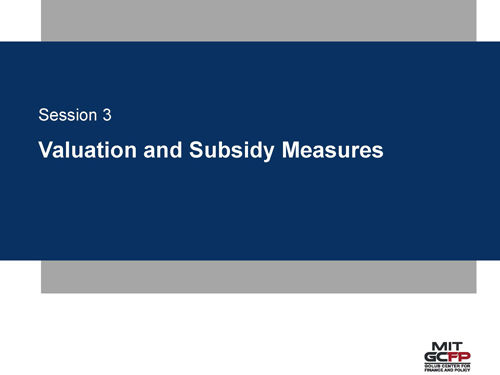Determining whether a particular government credit program is in the public interest requires a careful assessment of costs and benefits. A primary focus is the credit subsidy. This session aims to educate participants on the basic finance principles used to assess and forecast this cost. For illustrative purposes, the discussion will be based around an example of how each facet shows up in the planning process of one agency.
Key Lessons from MIT Finance Courses: Principles of Corporate Finance
Calculating costs and value
- Investments have equity holders: risk and return, market discount rates
- Cash flows, discount rates and net present values
- Various constructs for measuring costs
FCRA and the budget
- FCRA-mandated Treasury discount rates
- Calculation of credit subsidies and re-estimates
Practical applications
- Impact on platform and product design; example of economics and risks of credit guarantees relative to the other platforms
- How programs actually perform and a way to compare results across agencies
Interactive
- Discussion of raising/ lowering the subsidy to influence use and redefine targeted populations.
- Asset sale and valuation considerations. Should we sell? Can we sell?
Lecture Slides
Session 3 Slides: Valuation and Subsidy Measures (PDF)
Charts
Charts for this session are not currently available.

